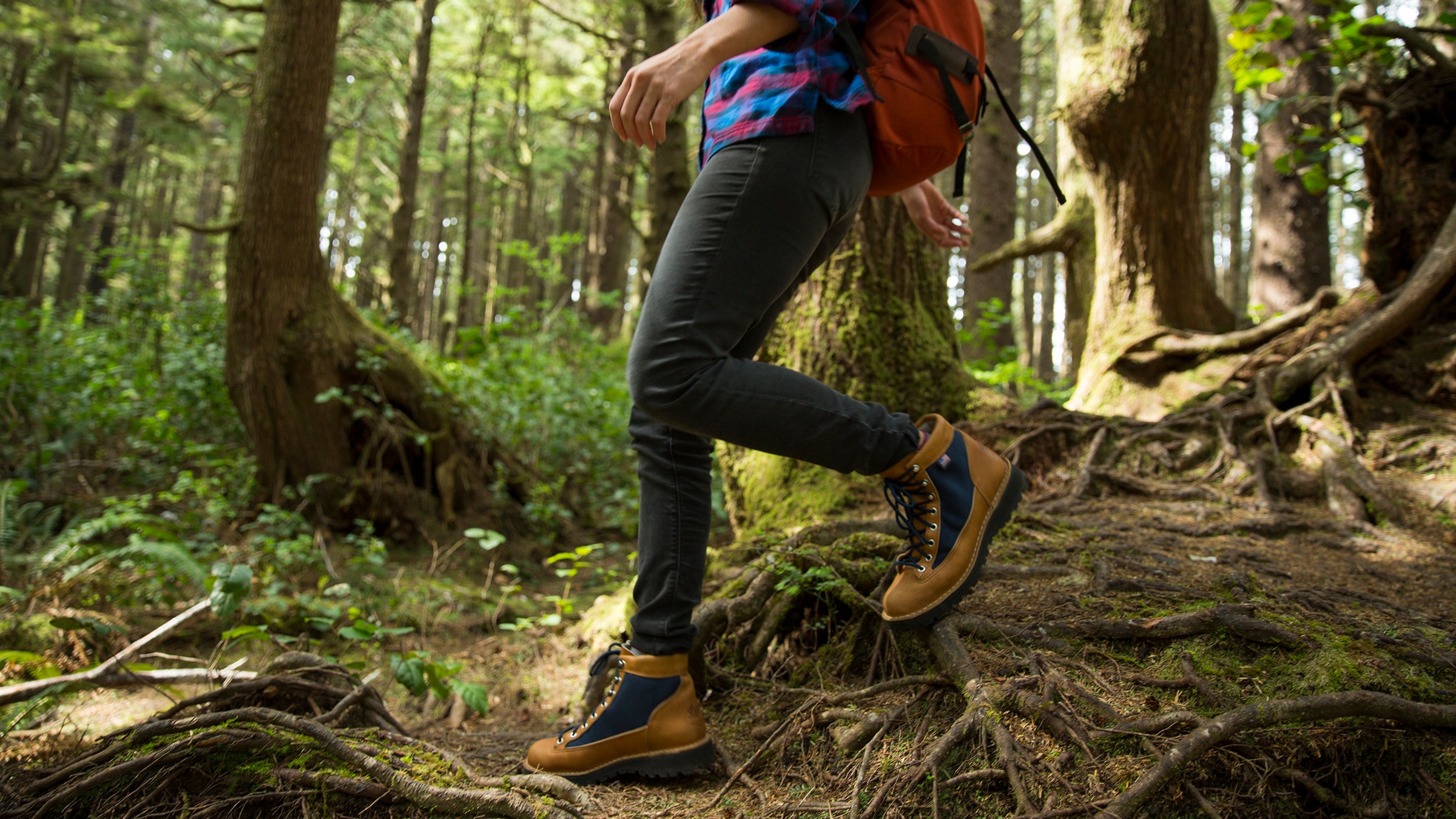HIKING BOOTS
THE SEARCH FOR THE RIGHT PAIR.

LEARN TO PICK THE RIGHT PAIR OF HIKING BOOTS WITH THIS GUIDE:
WITH ADDITIONAL INFORMATION ON HOW TO CARE FOR YOUR BOOTS AND FEET.
Blisters, blackened toenails, sprained arches, bone spurs, plantar fasciitis need any more convincing that the proper fit is vitally important? Read on. Start with the right socks. Details like toe seams and overall thickness can cause or relieve pressure problems. Many new generation hiking socks come with areas of differing thickness that can significantly alter boot fit, as well. If possible, buy boots while wearing the same socks you’ll use in the woods. Or buy socks and boots at the same time. Ignore size numbers and choose a boot that feels right for your foot size. This may mean you buy a pair one size larger than your norm. Don’t buy any boot if a narrow toebox cramps your toes. Toeboxes are difficult to remold adequately, particularly in beefier boots. The most important feature of any boot’s construction is the one you’ll never see. A boot’s “last” is the carved wooden foot around which the boot is shaped and constructed. If a manufacturer’s chosen last matches the shape and volume of your foot, chances are the boot will work for you. If it doesn’t match, then even the finest quality construction will result in nothing more than expensive and durable torture devices. Experienced bootfitters can correct problems that cause isolated pressure points, but even the most creative bootfitter can’t change a grossly mismatched last. If the last and size are in the ballpark, yet your foot seems to slop around inside the boot, the problem might be the footbed. A footbed keeps your foot from contorting inside the boot by supporting the sole in a neutral position. Other symptoms indicative of poorly matched footbeds are tender points on the heel and ball of your foot during hiking, pain in the arch, and persistent heel slip. People with high arches often need footbeds with more arch support than boot manufacturers typically provide. Some outdoors shops can customize molded footbeds like Superfeet, which work extremely well, or you can buy over the counter footbeds for anywhere from $10 to $30. For truly persistent problems you might need custom molded orthotics. These rigid and often expensive ($150 and up) footbeds must be fitted by podiatrists. To determine whether you might need orthotics, look at the wear patterns on the soles of your older shoes and boots. If they show extreme wear on the inner side of the soles (pronation) or the outer side (supination), then your ankles and arches probably need orthotic support.
Learn more at Backpacker.com